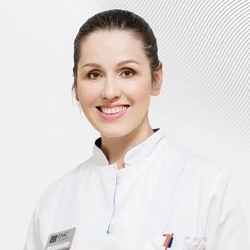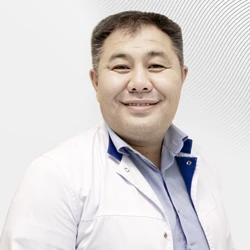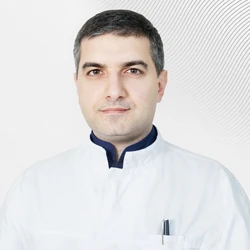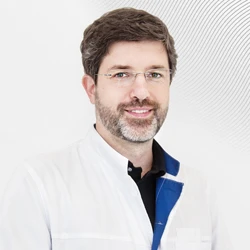Intensive care patients are patients with serious illnesses and injuries after complex surgical procedures and anesthesia. And if most of us know what happens in hospital rooms, then intensive care and intensive care are usually always closed to prying eyes. Visits to the intensive care unit are usually prohibited. However, any of us is sure that when a person is in critical condition, it is very important to have a loved one nearby.
The head of the Intensive care Unit (ICU) tells about visiting patients with relatives and friends EMC Elena Aleshchenko:
Why visit ICU patients?
In fact, a patient in the ICU rarely needs the presence of relatives. But for many people, it is very important to make sure that everything is okay with a loved one, to be with them for at least a minute, and we understand this perfectly well. After anesthesia and surgery, the patient does not need additional care from relatives: he is fully provided by the medical staff of the department. Moreover, most people cannot always adequately perceive the appearance of a loved one who is connected via wires and "tubes" to devices and monitors, and nurses are constantly scurrying around him.
It should be understood that a person who wants to visit a patient in the ICU must be prepared. Before allowing a visit, we talk in detail with relatives so that they correctly perceive everything that is happening with their loved one - of course, they have questions. Admittedly, we manage to find a common language with most of the visitors. Then, being in the ICU, they do not interfere with the treatment process. But in fact, the best time to see your loved ones is when the patient is close to recovery and ready to be transferred to a hospital.
However, relatives should keep in mind that the most important thing for us is the patient's opinion about visits to both the ICU and the hospital. We also follow the patient's wishes about who can be provided with information about his health status, which are recorded in the inpatient's medical record.
How should visits to the NICU be organized?
Intensive care is a department where there is a special sanitary and epidemiological regime dictated primarily by the interests of patients. We do not allow you to enter the department in outerwear and outdoor shoes. We will ask you to change into disposable shoe covers and a bathrobe.
When is the best time to go to the ICU?
Of course, all visits to the ICU must be coordinated with the doctors and the head of the department, and, of course, the main thing is the patient's desire. Intensive therapy is also a treatment, but it is many times more active, in simple terms, and it is aimed at restoring vital functions (respiration, blood circulation, metabolism) disrupted as a result of surgery, anesthesia, trauma, or serious illness. There is a lot of sophisticated equipment that monitors the condition of individual organs and systems and supports the vital functions of the body. In addition, we have a lot of invasive procedures, so the doctor will tell you the most convenient time to visit the patient. We are always in touch with the relatives and friends of our patients.
How much time can a visitor spend in the ICU?
If you visit someone in the ICU, you need to understand that not only your relative is here, but also other patients. Everything that happens here with the patient takes place in the presence of many people - the medical staff and the patients themselves, so you need to be prepared for the fact that you will witness not only medical events, but also meals, hygiene procedures, and toilets. In our department, it is possible to mark the area around the patient's bed with a screen, which allows you to create some personal space. However, this restricts free access to the patient and may prevent medical staff from providing the necessary care, so we set the number of visitors in advance and ask you not to stay too long in the department.
How long can a patient stay in the ICU?
The more severe the patient's condition, the longer he stays in the ICU. We need a certain period of observation, monitoring of vital signs, round-the-clock medical and nursing posts.
For simple surgical procedures, we monitor the patient from one to several hours, for large operations - a day or more, and transfer him to the hospital only after complete stabilization of the function of organs and systems. If the patient's condition requires intensive therapy and replacement of vital functions, he remains in the ICU until full recovery. It can be a lengthy process. But we explain to the patient (as much as possible) and his relatives that there is no need to force events, there is no need to rush back to the hospital, because intensive care is carried out in the ICU. We need to make sure that nothing threatens our lives.
The ideal situation
There is no "Do not enter" or "No trespassing" sign on the doors of our department and there never will be. The doors of all branches in the EMC are open to visitors (except for the operating unit, which is sterile). However, we ask you to adhere to the time of visits or coordinate your visits with the doctors of our department. After all, we have one goal – to help sick people in a critical situation. It's not easy, let's try to combine and coordinate our efforts.
Was this information helpful?
Questions and answers
Nonbacterial Prostatitis
For over a year now I have suffered with nonbacterial prostatitis. I am 65 years old and my prostate is 50 cubic cm. I have treated this every way possible to no avail. As I understand it, there are only 2 possibilities: 1) Daily painkillers and sleeping pills which leave me in a drug-induced stupor. 2) Radical
prostatectomy, although I don't have cancer and my PSA is around 1. I don't live in Russia and it isn't possible to have a radical prostatectomy here. Can I have this operation in your center? Because of the severe inflammation, I can only sit and walk for limited amounts of time. I am near insane from the constant pain and sleeplessness.
...more
As with all civilized urologists in the civilized world, we COMPLETELY remove the prostate ONLY in cases of prostate cancer. At the same time, if you would like to be seen by us for assistance, at your convenience we can examine you and treat your problem.
Both knees
I would like to get MRT and diagnosis for my knees. Left has old trauma and right is hurting now permanently. An English or German speaking doctor would be an advantage. KR Florian
Dear Florian. Be sure you'll get all the answers for your questions. We have MRI and English-speaking staff including knee surgery specialists. Our assistants will contact for further instructions. Kind regards.
Laser surgery for removal of varicose veins
Does you clinic offer laser surgery for removal (or correction) of varicose veins on the legs? I would like to learn about both the aesthetic and medical side of the issue.
Our clinic performs the most common and advanced methods of varicose veins’ treatment. This includes classic phlebectomy, injection sclerotherapy, and foam sclerotherapy (the most common method of treatment in Europe). The method of treatment depends on certain medical conditions. If the disease manifests itself as
small spider veins, the laser correction could be performed by a surgeon-phlebologist or a dermatologist. But each case is always individual. You need to make an appointment for a consultation to discuss all the issues in more detail.
...more
Cancer of the thoracic spine
I have cancer of the thoracic spine. According to the MRI, I have wedge-shaped vertebrae, and small fractures in some places, with the absence of normal bone. Is it possible to undergo a vertebroplasty if the lumbar region is also affected? Will the lumbar vertebrae be able to support the thoracic vertebrae after
this procedure?
...more
It is necessary to analyze the MRI scans in this case. Metastatic vertebral bodies are treated with radiation and chemotherapy according to our principles. Vertebroplasty is possible, but it is difficult to say anything specific without seeing the scans.
Hernia-related pain
Hello, I had hernia-related pain about one month ago. With abrupt leg and foot movements, I experience pain in the cervical segment of the spine, radiating into my arm. MRI test result: degenerative-dystrophic changes of the cervical segment, spondylosis, osteophytosis of C5-C6 segment, posterior hernia of C4-C5
segment with a tendency to sequestration. Could the hernia growth be stopped? What do I do?
...more If the MRI data shows a disk protrusion (small hernia) which does not cause dural sac compression and you have no clinical manifestations of the disease, you need to undergo physical therapy and therapeutic physical training aimed at strengthening the muscles of the cervical segment of the spine. In order to make the
decision, you must make an appointment and show the MRI results to a neurologist or neurosurgeon, who will give you recommendations for further action. You can get all necessary assistance at our center.
...more 









.webp)


.webp)




.webp)

.webp)





